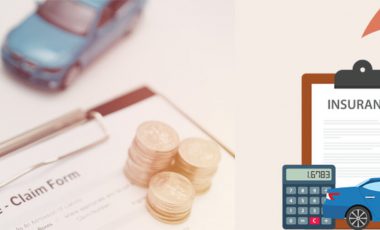The 100 Deadliest Days of Summer for Drivers: What You Need to Know
Ah, summer – the harbinger of sun-kissed days and starlit nights. For teenagers, it signifies a hiatus from the regimented school days. The season teems with adventures, friendships, and the electric buzz of possibility. It’s the perfect canvas upon which to paint memories that’ll last a lifetime.
But, unbeknownst to many, there’s a hidden specter that haunts these golden days. Memorial Day rings in the start of what’s ominously termed the “100 deadliest days” for teen drivers. It’s a time frame where the frequency of fatal accidents involving teenagers escalates.
The Grisly Statistics: Why Are These Days Deadly?
- Traffic Accidents and Fatality Rates: Between the cacophony of summer activities and the sheer volume of teenagers on the road, the statistics are chilling. During these 100 days, teenage traffic fatalities spike, with the grim reaper claiming thrice as many lives compared to the rest of the year.
- In the United States, the National Highway Traffic Safety Administration (NHTSA) reveals a startling statistic: an average of 10,142 fatal car crashes occur during the 100 deadliest days of summer. Among these tragic incidents, approximately 3,450 involve drivers under the age of 20. The leading causes behind these fatal accidents are often attributed to speeding, distracted driving, and drunk driving.
- Substance Abuse: A Rising Trend: The introduction of illicit substances into this volatile mix exacerbates the situation. With school out, parties and gatherings become the de rigueur, often accompanied by a sinister entourage of alcohol and drugs.
Unveiling the Culprits: What are the Common Causes?
- Distraction – The Modern Epidemic: With smartphones singing their siren songs and passengers vying for attention, distractions are rampant. Unfortunately, these distractions morph into treacherous agents of chaos on the road.
- Speed – An Old Foe: Speed, that intoxicating adrenaline rush, has been a persistent nemesis on the roads. Teenagers often succumb to the thrill, not realizing that with great speed comes reduced reaction time.
- Inexperience – The Achilles’ Heel: The greenness of teenage drivers makes them more susceptible to misjudgments. They lack the repertoire of experiences that mold seasoned drivers into road-savvy navigators.
The Mirage of Invincibility
- Teen Psychology and Risk Perception: The adolescent brain is a cornucopia of development, and sometimes this development doesn’t keep pace with the decision-making required on the roads. Risk often seems like a distant echo, and a mirage of invincibility pervades.
- Peer Pressure and its Consequences: The weight of peer influence can be burdensome. The desire to impress friends or fit in can sometimes forge chains that drag teenagers into making catastrophic choices.
The Role of Substance Abuse
- Alcohol and Its Potent Effects: Alcohol, a frequent guest at gatherings, clouds judgment. For teens, its allure often shrouds the dire consequences – slowed reflexes and a haze of poor decisions.
- Illicit Drugs: A Toxic Brew: From marijuana to prescription meds misused recreationally, these substances can alter perceptions and reflexes, forming a cataclysmic cocktail when mixed with driving.
Mitigating Distractions
- Technological Babysitters: There are apps and devices that can restrict smartphone use while driving. These technological sentinels can be invaluable in creating a cocoon of focus for the driver.
- The Art of Single-Tasking: Educating teens on the importance of focusing solely on driving is crucial. It’s an art that requires the discipline to tune out the myriad of distractions.
Taming the Speed Demon
- Understanding Limits: Impressing upon teens that speed limits are not mere suggestions but lifelines is essential. These limits are carefully calibrated based on terrain, traffic, and a plethora of other factors.
- Defensive Driving Techniques: Defensive driving involves anticipating the actions of others and adjusting accordingly. It’s an essential toolkit for navigating the unpredictable waters of traffic safely.
Creating Experienced Drivers
- Graduated Licensing Programs: These programs are designed to provide teens with graduated levels of driving privileges. They allow teens to hone their skills over time before diving into the deep end of unrestricted driving.
- The Magic of Behind-the-Wheel Practice: Practice is the crucible in which good drivers are forged. The more time teens spend behind the wheel under supervision, the more adept they become at handling real-world situations.
Role of Parents and Community
- The Family Unit: A Pillar of Strength: Parents have a pivotal role to play. From setting a good example to providing guidance and setting boundaries, they are the first line of defense.
- Community Initiatives for Safety: Community programs, whether in the form of educational initiatives or providing safe recreational alternatives, can play a significant role in mitigating the risks.
The 100 deadliest days are a formidable foe. With the cocktail of inexperience, distractions, speed, and substance abuse, it’s a time fraught with peril. Teen car insurance plays a vital role in protecting individuals and their vehicles from financial losses resulting from accidents during the 100 deadliest days.

We generated 12,100,000+ Quotes (...counting), Helping People to Save Money and Time.
But, armed with awareness, discipline, and community support, we can protect our teens. Let’s make these 100 days not a gauntlet of dread, but a rite of passage into a lifetime of safe driving.
Comprehensive car insurance coverage can provide financial support for repairs, medical expenses, and liability claims. Moreover, some insurers offer additional benefits such as roadside assistance and accident forgiveness, providing peace of mind during this risky period.
Frequently Asked Questions
Which cities have the most accidents on the 100 deadliest days?
Cities with large populations and high rates of traffic congestion tend to have the most accidents on the 100 deadliest days of summer. Some of the cities with the highest number of accidents during this time period include Los Angeles, New York City, Chicago, and Houston.
What are the most dangerous times for driving on the 100 deadliest days?
The most dangerous times for driving on the 100 deadliest days are Friday and Saturday nights, when there is more traffic and people are more likely to be drinking and driving. The early morning hours are also a dangerous time, as people are often tired from driving all day.
What are the common causes of summer car crashes on the 100 deadliest days of summer?
The leading causes of car crashes involving teen drivers during the 100 deadliest days are often attributed to speeding, distracted driving, and impaired driving.
Speeding: Excessive speed reduces the ability to maintain control of a vehicle and increases the severity of accidents.
Distracted Driving: Teens are more prone to distractions, such as talking or texting on their phones, interacting with passengers, or using in-car entertainment systems. These distractions divert their attention from the road, increasing the risk of accidents.
Impaired Driving: The influence of alcohol or drugs significantly impairs judgment, reaction time, and decision-making abilities. Teenagers may be tempted to engage in such risky behavior during social gatherings or parties.
How can we make the 100 deadliest days safer on the road?
To ensure safer roads during this critical period, it’s important to take proactive measures. Here are some steps we can take collectively:
Education and Awareness: Implement comprehensive driver education programs and raise awareness about the dangers of distracted and impaired driving.
Enforcing Traffic Laws: Increase law enforcement presence to deter speeding, reckless driving, and other traffic violations.
Parental Involvement: Engage with teenage drivers, set clear rules, and enforce safe driving practices.
Technology-Assisted Safety Measures: Promote the use of advanced safety features in vehicles, such as lane departure warning systems and automatic emergency braking. Additionally, telematic devices, which utilize technology to monitor driving behavior, can provide valuable insights and encourage safe driving habits.
Editorial Guidelines: The above is meant as general information to help you understand the different aspects of auto insurance. This information does not refer to any specific auto insurance policy. Coverages and other features vary between insurers, vary by state, and are not available in all states. References to costs of coverages/repair, average or typical premiums, amounts of losses, deductibles, etc., are indicative and may not apply to your situation. We encourage you to speak to our insurance representative and to read your policy contract to fully understand your coverages.
Featured Posts

Cheapest Car Insurance After a DUI: Discover Wallet-Friendly Options

Cheap Liability-Only Car Insurance for 2024: Complete Guide

